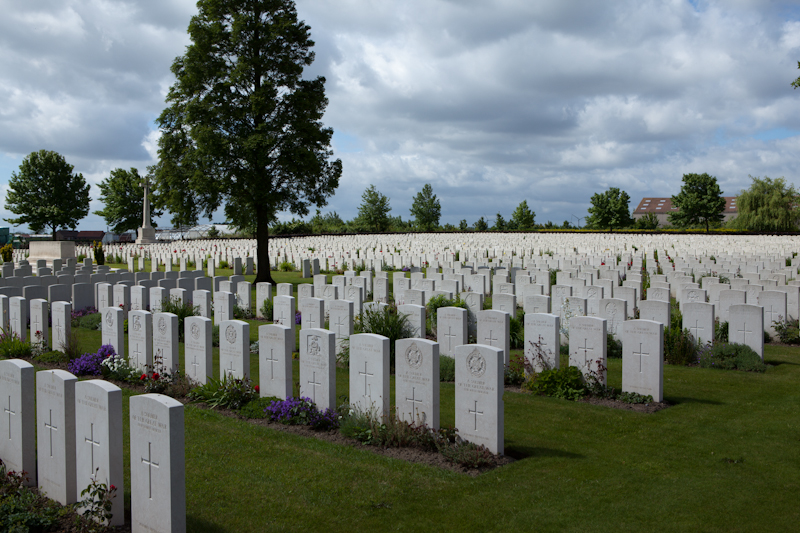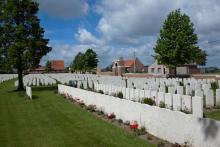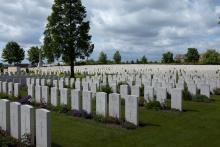Langemark-Poelkapelle, West-V.
Langemark is located north of the town of Ieper off the N313. From the Markt take the Korte Ieperstraat, at the end turn right into Boezingestraat, past the first turning on the left and the cemetery is 100 metres on the left hand side.
Langemark has given its name to the Battles of 21-24 October 1914 and 16-18 August 1917. The village was in German hands from April 1915 to August 1917 and from April to September 1918. Commonwealth, French and Belgian forces have in turn defended and attacked it. "Cement House" was the military name given to a fortified farm building on the Langemark-Boesinghe (now Boezinge) road. The original Cement House Cemetery (now Plot I, an irregular group of 231 graves) was begun here at the end of August 1917 and used by the 4th and 17th Division burial officers, by field ambulances and by units in the line until April 1918. In the years immediately following the Armistice, most of Plots II - XV were added when Commonwealth graves were brought in from the battlefields and small burial grounds around Langemark and Poelkapelle, mostly dating from the Autumn of 1917. Almost 500 French graves in the original Plots XVI, XVII and XVIII made at this time were removed in 1922, and the space vacated has been filled in the intervening years by graves brought in from communal cemeteries and churchyards in the area when their maintenance in these locations could no longer be assured. The cemetery is still used for the burial of remains that continue to be discovered in the vicinity, and a number of plots have been extended to accommodate these graves. There are now 3,576 Commonwealth servicemen of the First World War buried or commemorated in the cemetery. 2,408 of the burials are unidentified. Of the 22 Second World War burials in the cemetery, five are unidentified. The cemetery was designed by Sir Reginald Blomfield.





Add new comment